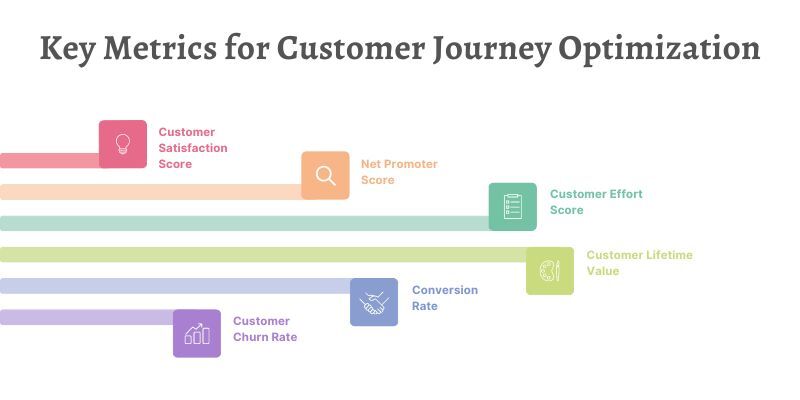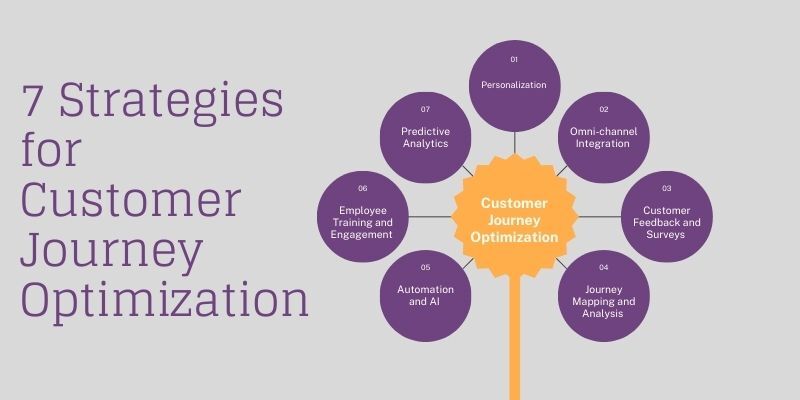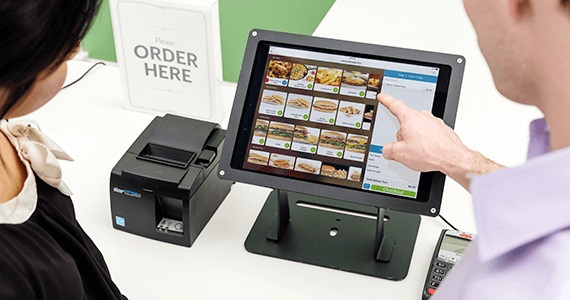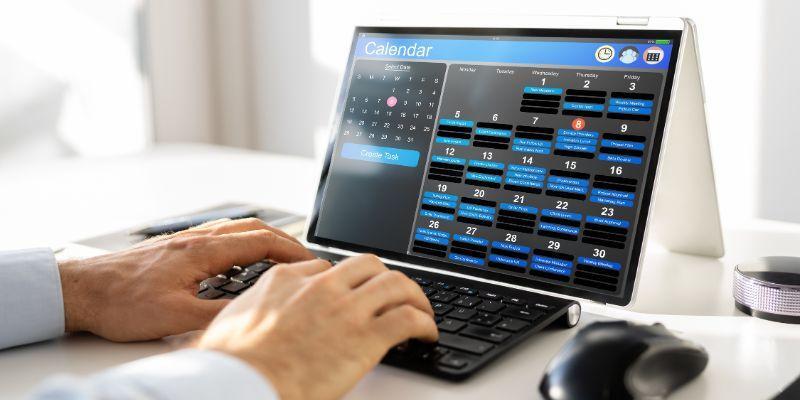Today’s customer is a little tricky to pin down. With so many options and channels to choose from, navigating the customer journey is elusive and ever-changing.
It can be overwhelming, but you must understand that customer journey optimization is now more important than ever. With the end goal to improve their overall experience, optimizing customer journey leads to more conversions and boosts retention.
According to statistics published in Forbes article, businesses that lead in customer experience outperform others by 80%, and 84% of the companies that work to improve customer experience report increased revenue.
Customer journey optimization requires a thoughtful approach and planning – as it is a process, not a solution.
So, here are the points that we shall be discussing:
- Key Metrics for Customer Journey Optimization
- 7 Strategies for Customer Journey Optimization
Let’s begin by exploring the customer experience optimization definition first.
Definition of Customer Journey Optimization
Customer journey optimization is a process of mapping and connecting every interaction across multiple touchpoints in delivering the best experience to guide and influence the decision of the customer to take the desired action or outcome.
The goal is to ensure a seamless end-to-end digital customer experience that is effective for the business and positively impacts the customer at several touch points.
Benefits of customer experience management and optimization:
- Enhanced customer experience
- Higher conversion rate
- Increased customer retention
- Streamlined processes
- Competitive advantage
- Improved ROI
- Reduced Customer Churn
- Real-time Feedback and Adaptation
In other words, from brand awareness to post-purchase, customer journey optimization can drastically improve your revenue and sales.
6 Key Metrics for Customer Journey Optimization
We’ll remember the memorable customer experience that impressed and enhanced our loyalty to the brand. Key metrics are essential for businesses to assess their customer’s overall experience and satisfaction with the product or service. Also, these metrics provide valuable insights into customer perceptions, preferences, and behaviors, which can help businesses optimize their journey.

But how can you measure customer experience and track progress regarding customer journey optimization? Here’s a list of key metrics you need to consider:
1. Customer Satisfaction (CSAT) Score
Customer satisfaction score is used to measure customer satisfaction with the product, service, and overall experience.
2. Net Promoter Score (NPS)
Net Promoter Score is a metric used to measure customer loyalty toward a brand, product, or service.
3. Customer Effort Score (CES)
Customer effort score is a metric used to measure how easy it is for customers to interact and engage with your brand, product, or service.
4. Conversion Rate
Conversion rate is a metric that measures the number of customers who have moved down the sales funnel and completed a desired action.
5. Customer Churn Rate
Customer churn rate is a metric that measures the percentage of customers who have stopped interacting, engaging, and using your brand, product, or service.
6. Customer Lifetime Value (CLV)
Customer lifetime value is a metric used to measure the total net profit a business can generate from a customer throughout their lifetime or relationship with the company.
7 Strategies for Customer Journey Optimization
A Customer journey spans multiple touchpoints and channels. Therefore, it needs to be consistent and personalized throughout. Various customer experience strategies can be integrated to optimize the customer journey, but you need to ensure it offers a seamless experience.

Let’s explore the seven key customer journey optimization strategies you can implement.
1. Personalization
You can optimize customer journeys through personalization. You need to tailor messages, offers, and products for each person by leveraging their data and information.
Data Collection and Analysis
What is your data telling you? Turn your data into actionable insights and valuable tactics that deliver outcomes. Understand what are the customer’s preferences, interests, and behaviour patterns. Also, identify important touchpoints to the customer, analyze real-time insights, and leverage them to create a holistic experience for a customer.
Tailoring Content and Offers
How can you deliver the right message at the right time? Cut through the noise and tailor content and offers for specific customers. It helps you to deepen your connection and resonate with customers. Customers stick around only when the content speaks directly to them.
2. Omni-channel Integration
With so many interaction options, customers demand businesses to reach them where they are. Therefore, you need to digitalize the customer experience through omni-channel integrations.
Seamless Customer Experience
Every interaction is critical, and you need the right customer experience solutions to maintain a seamless experience.
Consistency Across Channels
Optimizing customer journey can be achieved by maintaining consistency across the channel. Never stop refining and reviewing the channel to make it easier for customers to connect with the brand.
3. Customer Feedback and Surveys
Do you know what your customers think? Whether it’s prompted or unpromoted, customer feedback matters the most.
A complete customer feedback solution is required to collect customers’ responses, reactions, and comments. Wavetec offers complete solutions for customer feedback that integrate with your current system and work well.
Collecting Feedback
Collect all customer feedback in one place. Put everything in the repository, even if you have incomplete feedback. Categorize and sub-categorize feedback into segments to see the bigger picture of what’s going on.
Analyzing Feedback
Now that you have the feedback in one place, start analyzing. I appreciate and acknowledge the feedback. Find the root cause behind unsatisfactory customers.
Implementing Changes
Feedback is of use once it is implemented. Identify where and what needs to be changed or improved to achieve optimal performance. Optimize customer experience by implementing feedback that enhances the customer journey and significantly impacts the business.
4. Journey Mapping and Analysis
Elevate your customer journey to identify the low and high points. You need to consider a customer journey mapping guide to analyze each interaction’s effects on the customer. Every journey is different and follows different touchpoint that drives customers to the end goal.
Identifying Pain Points
Analyzing the journey map lets you know your customers’ pain points. Student customers stop interacting with your brand, product, or service at these points. Identifying pain points increases conversions and reduces churn rates.
For example, if a customer lands on your website, the information is all clustered with no clarity and a call-to-action button. Finding the information constitutes a pain point for the customer.
Streamlining the Journey
Visualizing pain points and solving the issues can help you streamline the journey. Reduce customer burden, enhance user experience, and engage them seamlessly.
5. Automation and AI
Automation and AI is the key to improving the customer flow and redefining the journey. AI has rapidly evolved, potentially transforming the landscape for customer experience.
Automation and AI have become imperative in today’s digital business landscape because they help you:
- Build customer profiles
- Deliver personalized experiences
- Anticipate consumer behavior trends
- Predict the product users will respond best to
Chatbots and Virtual Assistants
Chatbots and virtual assistants help optimize customer journeys by instantly responding to queries and needful product information. Customers grapple with questions as they navigate across various channels, from social media platforms to mobile apps. Virtual assistants can help and guide them throughout the sales funnel.

Predictive Analytics
Data analytics, artificial intelligence, and machine learning can help you unlock predictive analytics. These predictive analytics guide businesses in informed decision-making based on the insights and information generated by the analytic tool.
6. Employee Training and Engagement
Beyond improving systems and processes, it is essential to train employees. Even with the best systems, businesses can improve engagement and user experience. Focus on employee training and engagement.
Customer-Centric Culture
Customer is the key and the center of all your efforts. Developing a customer-centric culture will prioritize strategies that create positive customer experiences. A customer-centric culture always focuses on creating and delivering value.
Empowering Frontline Staff
Present a clear vision to the frontline staff as their decisions and actions can impact the business value.
For a fully optimized customer journey, you must provide them with resources, information, training, and tools. Adopt this philosophy of empowering employees to make decisions and ownership.
7. Predictive Analytics for Anticipating Customer Needs
Customer experience analytics is a process of collecting and analyzing data to understand the customers better and take timely actions to improve their journey.
Forecasting Future Behavior
Diving deeper into customer psychology and forecasting future behavior based on their patterns and data can help businesses craft effective strategies for the future. Only when you can take 10 steps ahead of the customers can you solve their problems yet to arise?
Simply, forecasting future customer behavior takes into account
- Previous purchase history
- Spending habits
- Buying patterns,
- Interaction touchpoints,
- Economic health
- Demographics
- Other key variants
Proactive Engagement and Recommendations
Maintain a proactive engagement approach to deal with customers throughout their journey. Create an environment of open communication so that customers can interact even before the problem, needs, or change arises.
Here’s how you can achieve this:
- Reach out to customers
- Give customers the attention they need
- Use proactive outreach opportunities
- Anticipate customer journey
Dynamic Pricing Strategies
Dynamic pricing, often referred to as real-time pricing, can also be integrated into the system. The purpose of using dynamic pricing strategies is to optimize the price based on demand, competition, and other factors that help businesses maximize their ROI.
Customer Journey Optimization – FAQs
How do you define and map the different stages of the customer journey?
While the stages may differ depending on the business and industry, these are the five main stages of the customer journey:
- Awareness – When customers get to know your brand through ads, online visibility, or word of mouth.
- Consideration – When the customer starts considering the brand or product as a potential solution to their needs.
- Evaluation – When the brand narrows down its choices and evaluates the brand or product’s features, benefits, and pricing.
- Purchase – The customer decides to make the purchase.
- Post-purchase – Satisfied customers become advocates for the brand and share positive experiences.
How does employee training and engagement contribute to a customer-centric culture and improved customer journeys?
Here’s how employee training and engagement contribute to a customer-centric culture and improved customer journeys:
- Enhanced product knowledge
- Improve customer service skills
- Higher employee satisfaction
- Positive w0rd-of-mouth
- Increased customer loyalty
- Improved problem solution
- Efficient collaboration
- Continued improvement
How can businesses balance the use of customer data for optimization while ensuring data privacy and security?
5 ways to use customer data for optimization while ensuring data privacy and security:
- Implement robust data governance policies
- Obtain informed consent for data collection
- Train employees on data security
- Comply with data protection regulations
- Maintain a data breach response plan
Final Words
To wrap it up, we can say that customer journey optimization is a paramount goal for any business. Leveraging solutions like queue management systems, point-of-sales, AI, chatbots, and other technologies can help businesses streamline their operations and ultimately achieve a customer-centric approach.
This guide highlights different ways to optimize your customer journey and offers invaluable insights into achieving customer service and satisfaction excellence. However, we recommend you take a multi-approach when designing your customer optimization journey plan.
BOOK A FREE DEMO




